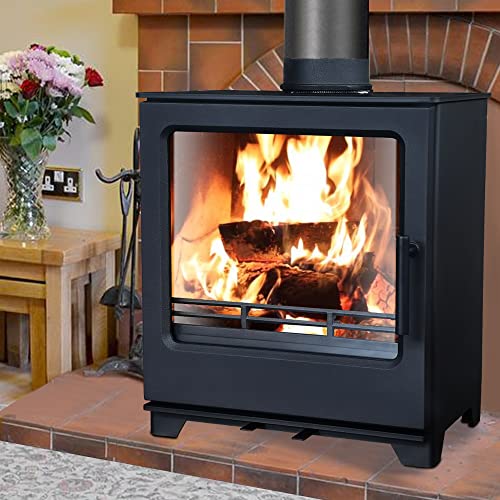The Versatility and Benefits of Multi-Fuel Stoves
Multi-fuel stoves have become a significantly popular choice for both property owners and outdoor lovers alike. Their capability to burn a range of fuels-- such as wood, coal, pellets, and gas-- provides unmatched versatility and effectiveness in heating. This article explores the benefits of multi-fuel stoves, their operational systems, considerations for selecting one, and an overview of leading business in the market.
Tabulation
- Intro to Multi-Fuel Stoves
- Benefits of Multi-Fuel Stoves
- How Multi-Fuel Stoves Work
- Aspects to Consider When Choosing a Multi-Fuel Stove
- Leading Multi-Fuel Stove Companies
- FAQs
- Conclusion
1. Introduction to Multi-Fuel Stoves
Multi-fuel stoves are designed with the capability to burn more than one kind of fuel, making them a perfect option for numerous heating needs. These stoves are particularly valued in areas where one type of fuel may not constantly be available, as they can change in between various sources, providing convenience and dependability.
2. Benefits of Multi-Fuel Stoves
Multi-fuel stoves use various benefits that add to their growing appeal. Some of these advantages consist of:
- Versatility in Fuel Sources: Users can select from a variety of fuels depending upon availability and expense.
- Increased Efficiency: Multi-fuel stoves are crafted to make the most of heating efficiency while lowering emissions.
- Eco-Friendliness: The ability to burn renewable sources like wood pellets makes these stoves a greener alternative.
- Cost Savings: With the versatility to change fuels, property owners can profit from the most economical alternatives offered.
- Consistent and Reliable Heating: Multi-fuel stoves can be depending on whatever fuel is accessible, making sure constant warmth in negative conditions.
3. How Multi-Fuel Stoves Work
The functional system of a multi-fuel stove focuses on its internal style and performance functions. A lot of multi-fuel stoves contain:
- Firebox: A robust container where the fuel is burned. This area is created to endure high temperatures.
- Air Intake System: Provides combustion air. The style frequently consists of adjustable vents to control air flow and manage the burn rate.
- Ash Pan: Collects ash produced from burning fuels, permitting easy cleanup and maintenance.
- Flue: An exhaust pathway directing smoke outside to avoid smoke accumulation inside the home.
When using a multi-fuel stove, it's important to follow the maker's directions to attain optimal efficiency and security.
4. Aspects to Consider When Choosing a Multi-Fuel Stove
When choosing the perfect multi-fuel stove, think about the list below factors:
- Size: Choose a stove that fits your area. Procedure the area where it will be set up.
- Efficiency Ratings: Look for stoves with high efficiency scores to ensure you get the most heating out of your fuel.
- Fuel Options: Consider which fuels are most available and budget-friendly in your location.
- Emissions and Regulations: Research regional policies regarding emissions to guarantee compliance.
- Expense: Factor in both the initial cost of the stove and ongoing fuel expenses.
5. Leading Multi-Fuel Stove Companies
Numerous reliable companies concentrate on creating and producing multi-fuel stoves. Below is a table of prominent multi-fuel stove companies and their noteworthy features:
| Company Name | Noteworthy Features | Item Range |
|---|---|---|
| Morso | Danish design, high performance, environment-friendly | Small stoves to large designs |
| Charnwood | Personalized designs, easy-fuel switching | Contemporary and conventional |
| Stovax | A wide range of styles and sizes | Multifuel and woodburner stoves |
| Blacksmith | Workmanship and resilience | Handmade artisanal stoves |
| Gazco | Innovative innovation, smart controls | Gas and electric options |
6. Frequently asked questions
1. What fuels can be burned in a multi-fuel stove?
Multi-fuel stoves can burn wood, coal, pellets, and sometimes even peat and gas, depending upon the model and design. Burning Wood On Multi Fuel Stove to check the stove's manual to ensure compatibility.
2. Are multi-fuel stoves energy effective?
Yes, multi-fuel stoves are usually developed to be energy-efficient, optimizing heat output while minimizing emissions. Designs with greater efficiency scores can considerably lower fuel intake.
3. Do I require a chimney for a multi-fuel stove?
Yes, most multi-fuel stoves require a chimney or flue to vent smoke and gases safely outside your home.
4. How do I preserve my multi-fuel stove?
Routine upkeep involves cleaning the firebox and ash pan, examining the flue for clogs, and examining seals and gaskets for wear. It's smart to have the stove serviced annually by an expert.
5. Are multi-fuel stoves safe?
When set up and preserved correctly, multi-fuel stoves are quite safe. Following manufacturer guidelines and local policies will assist reduce risks.
7. Conclusion
Multi-fuel stoves represent a flexible and effective option for heating needs, suitable for various settings, from cozy homes to rustic cabins. Their capability to adjust to numerous fuel sources allows users to take control of their heating preferences, contributing to both convenience and sustainability. As need grows, leading manufacturers continue to innovate, using stoves that supply not only heat however likewise aesthetic and practical benefits.
Whether you are seeking to replace an existing heating service or exploring choices for a new develop, thinking about the functions and benefits of multi-fuel stoves will certainly inform a smarter financial investment in your house's heating needs.

